On any given night of the week, when the city has yawned, closed its blinds, and shut up shop, the street lamps throw their orange glow on small mountains of litter; two windows in London’s East End remain illuminated. Swarms of nocturnal animals shuffle in and out, squinting in the fluorescent light before stepping out onto the street grasping piping hot paper bags. These two shops, Beigel Bake (“the white one”) and Beigel Shop (“the yellow one”) on Brick Lane, have been serving juicy salt beef bagels twenty-four hours a day since the 1970s. They stand sturdy and loyal, leftover from a time when a huge proportion of London’s Jewish community resided around Hackney, when the street signs were in Yiddish and kosher restaurants could be found on every corner. Nowadays, the population has scattered across London, and these two shops are among a relatively small number of well-known Jewish bakeries and cafés in the city.
It is this curious unfamiliarity that has been drawing guests to Monty’s Deli since it opened in April, slotting onto Hoxton Street, one of East London’s most transforming areas, between minicab offices, chicken shops, and seasonal eateries clad in reclaimed wood. To enter a restaurant in London, one of the most diverse culinary cities in the world, and find foods on the menu that you may have never eaten before, is a thrill for locals. The menu offers classic staples of Jewish cuisine, such as chopped liver, golden latkes, challah bread, lox and their signature salt beef and pastrami sandwiches.
Mark Ogus launched Monty’s as a market stall back in 2012, teaming up with chef Owen Barratt. Together they set up a stall at the independent food mecca Maltby Street Market, and were quickly praised by some of the biggest critics in the business for their handmade bagels, soft, salty pastrami, and perfectly pink salt beef. It was only a matter of time before the stall turned brick and mortar.
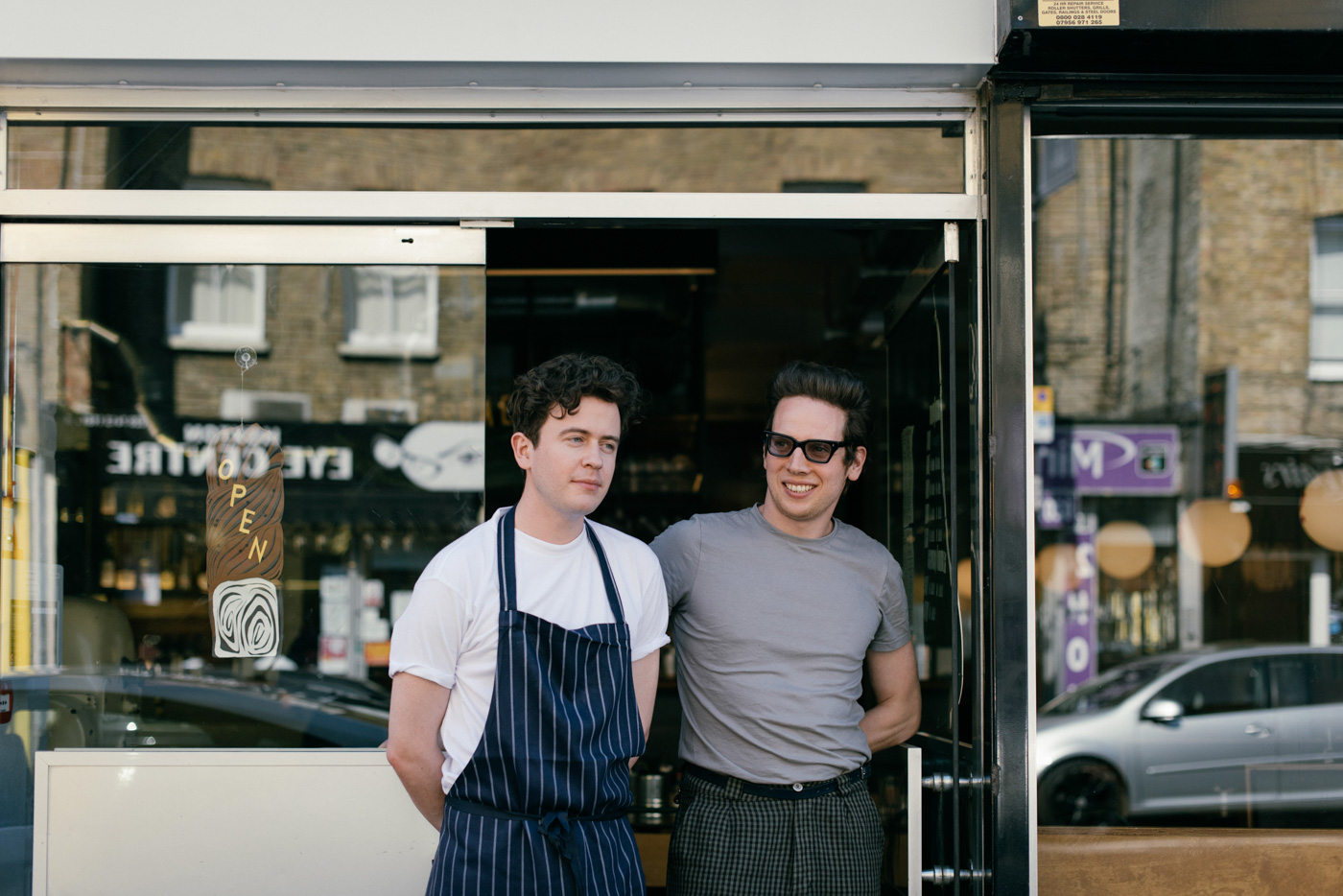
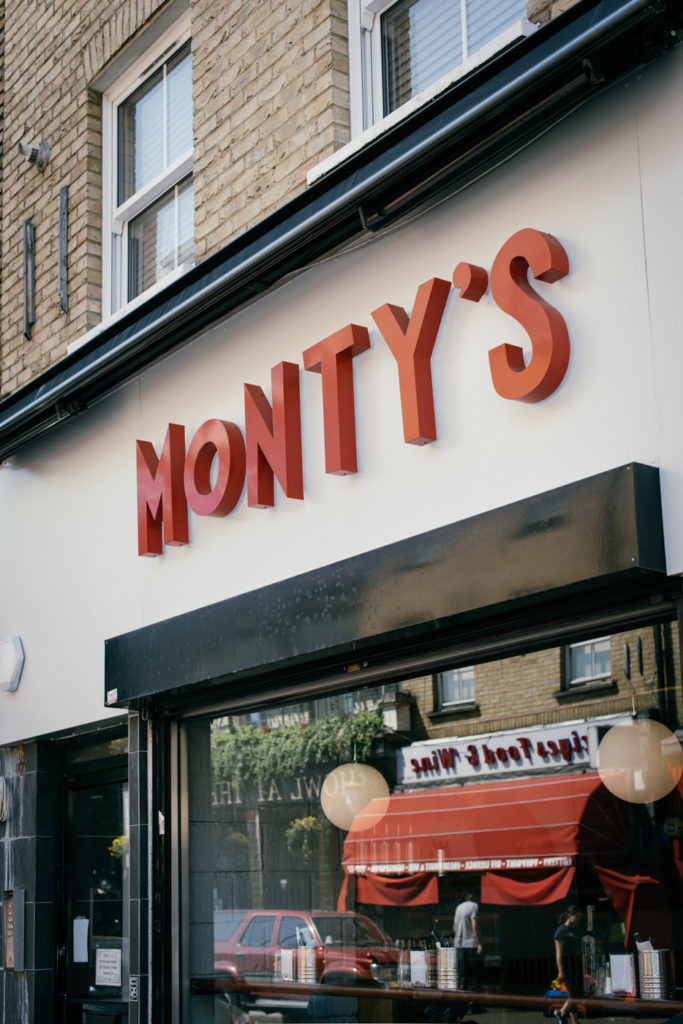
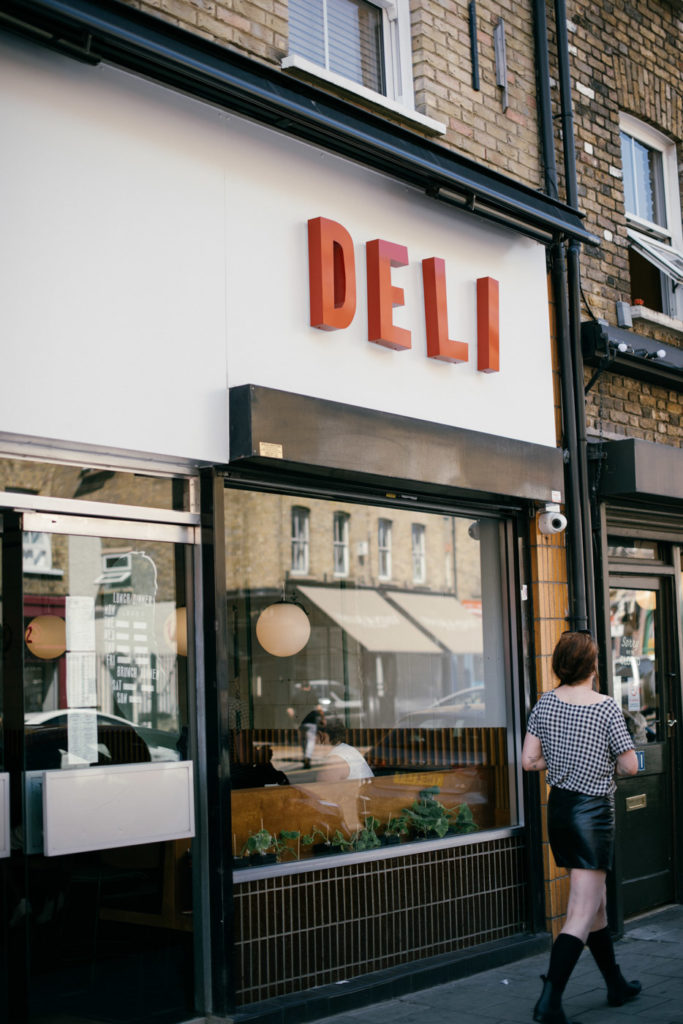
Ogus and Barratt began their search for a permanent space, finding themselves at the site of the family-run Anderson’s Bakery on Hoxton Street, who had closed after forty years of serving the community. The space had been painted and coated in lino. It was only when Ogus and Barratt began peeling back the layers that they discovered the stone floors and tiled walls of the butcher’s shop that occupied the building from the Victorian era up until the late ‘60s.
Today, Monty’s serves its last few bagels and plates of dill-scattered pickles to a few afternoon latecomers, who huddle beneath orb lanterns at the polished booths. The wall behind them bears the insignia of the old butcher’s: RG, “R. Gunner,” painted in green on the cracked white tiles. The floor is partially covered in its original black-and-white tiles, which have been rubbed away by generations of treading feet. “It was a big effort to try and restore what was there before,” Ogus tells me, greeting me in a pair of checkered tweed trousers and horn-rimmed glasses. “It took months and months. Monty’s is all about tradition and family, and it’s a family business that we took over. The only tenants of this building have been the butchers, the Andersons, and us. It just felt right.”
Both the food and the interior of Monty’s echo the iconic Jewish delis of New York and Los Angeles—bustling, stripped-back neighborhood cafés where the time of day is of little importance. But it also has the unmistakable personality of London. “We based the restaurant on the old workers cafés that have disappeared in London over the last few years,” Ogus explains. He pats the back of the booth. “I always wanted booths. I’d drawn these for the architect and when they were built it felt like the whole place was coming together. I love the fixed table, how the booths are connected to one another. They’re not too high, so you can put you arm over the back and sort of listen in to what people are saying, but you can also have a very intimate conversation. And I wanted it to be cheap. This is pleather.” He pats the tight, glossy material of the bench. “I specifically wanted pleather.”
Over on the other side of the room, the sandwich menu is chalked up on the wall—mensch, reuben, meshuggener, braised brisket, and smoked turkey—with freshly baked bagels threaded onto hooks below a tin signpost. A giant wooden pickle hangs above the tills, hand-painted by Ogus, who also happens to be an artist. “Everything in here is done by hand,” he explains. “The bagels are rolled by hand; the meat is cured by hand. I wanted our methods to run through the entire restaurant.”
An antique bagel separator stands by the door, while frothy New York egg creams and rum and shrubs come from a wooden bar topped by shelves of chocolate syrup and liquor. “We wanted a bar, because that’s how we’ve always done it, with the sandwiches there to be seen,” Ogus tells me. “That’s an inherent part of most U.S. delis, which are the only delis worth their salt, I think.”
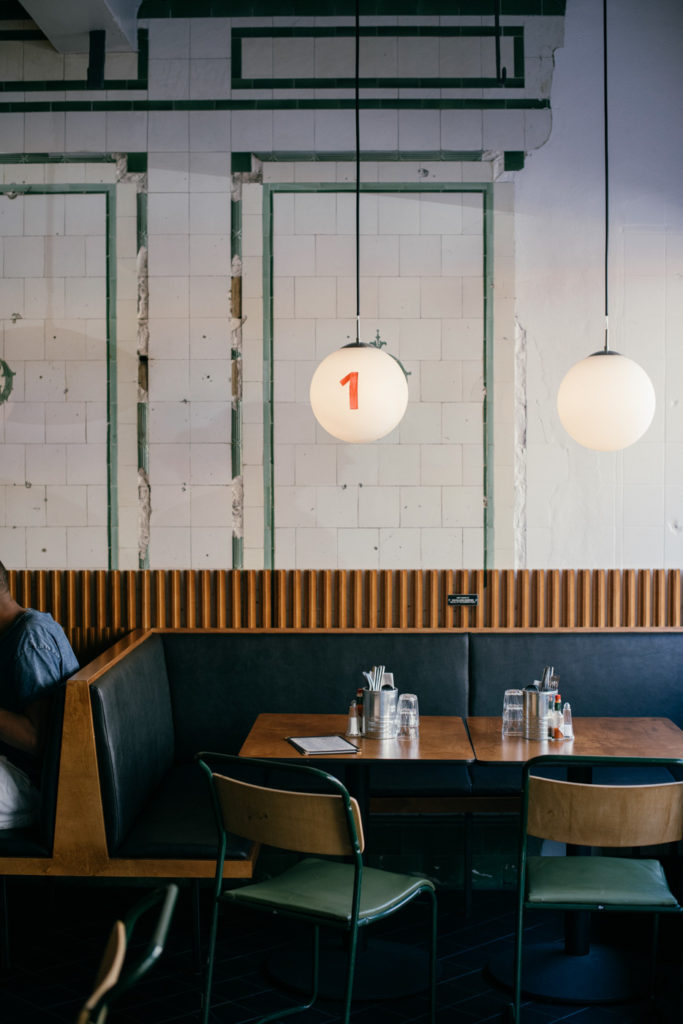
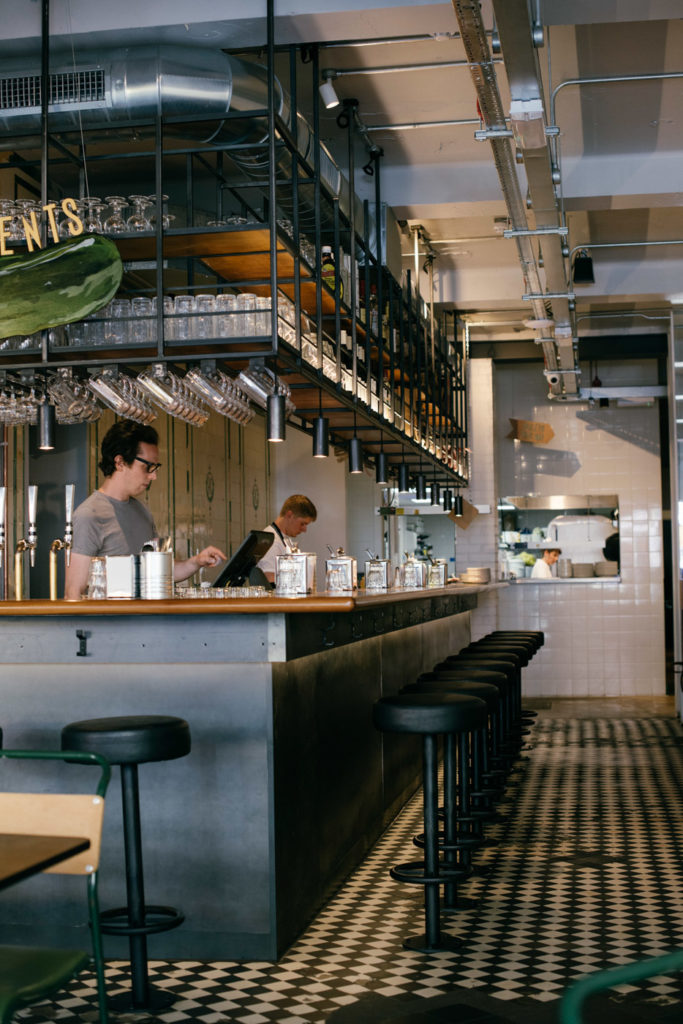
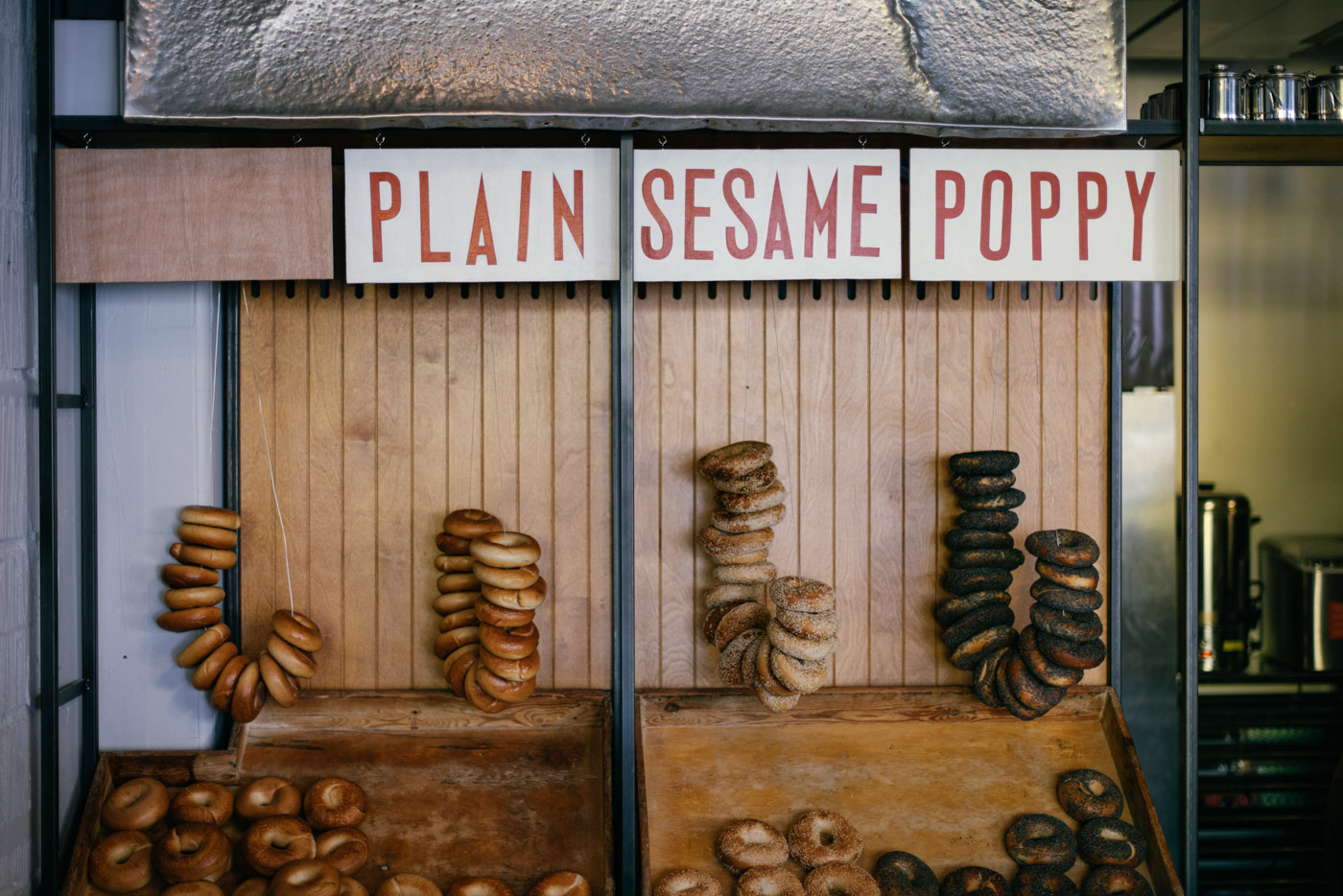
Unlike Ogus, Barratt did not grow up eating this kind of food. His obsession came later, when he started visiting New York and whiling away hours at bagel bars on the Lower East Side. “There’s something about the openness and availability of those classic Jewish delis,” he tells us. “It’s food presented with very little fuss, and there’s the comforting feeling that it’s available any time of day, whenever you want it.”
“I love those sprawling diners in L.A.,” Ogus adds, “with the gruff, standoffish, but strangely welcoming waiters. There’s barely any of that in London. We wanted to bring some of that joy of the Jewish deli to the U.K.”
The food at Monty’s is based on the meals Ogus grew up eating, surrounded by his family. He named the business after his late grandfather, the man with whom he shared his most memorable—and comfortingly unspectacular—meals growing up. “He wasn’t much of a cook; he was more of an eater,” Ogus laughs. He remembers his grandfather taking him to salt beef bars and delis around Golders Green and Stanmore.
On Friday evenings, his grandparents would come over with fresh bagels from the local bakery, joining him at the family table to break bread and share Shabbat dinners. “As a kid, I didn’t know that anybody was going out on a Friday night. I thought everyone was having that exact dinner with their family,” Ogus tells us. This weekly ritual is being kept alive in the restaurant, with family-style Shabbat dinners on offer each Friday. Just like Ogus’ family, guests can gather around the table to share Kiddush wine, bread, chopped liver, chicken soup, and golden roast chicken. “I always loved the food, but it was just what I was used to,” Ogus says. “The fun for me was always just being with family, eating this stuff that had some connection to our ancestors and our cultural identity. Food has always been my way of connecting with that.”
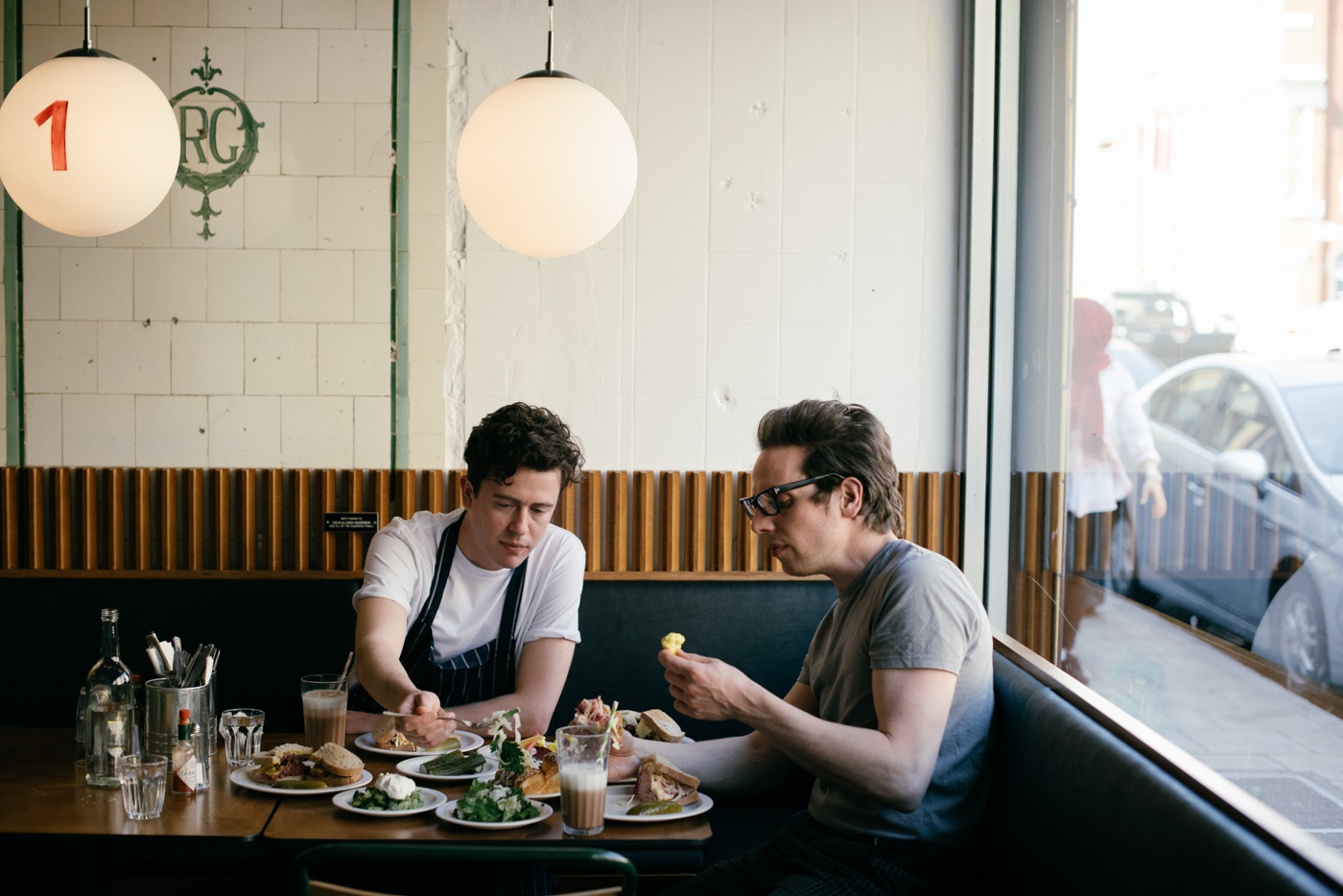
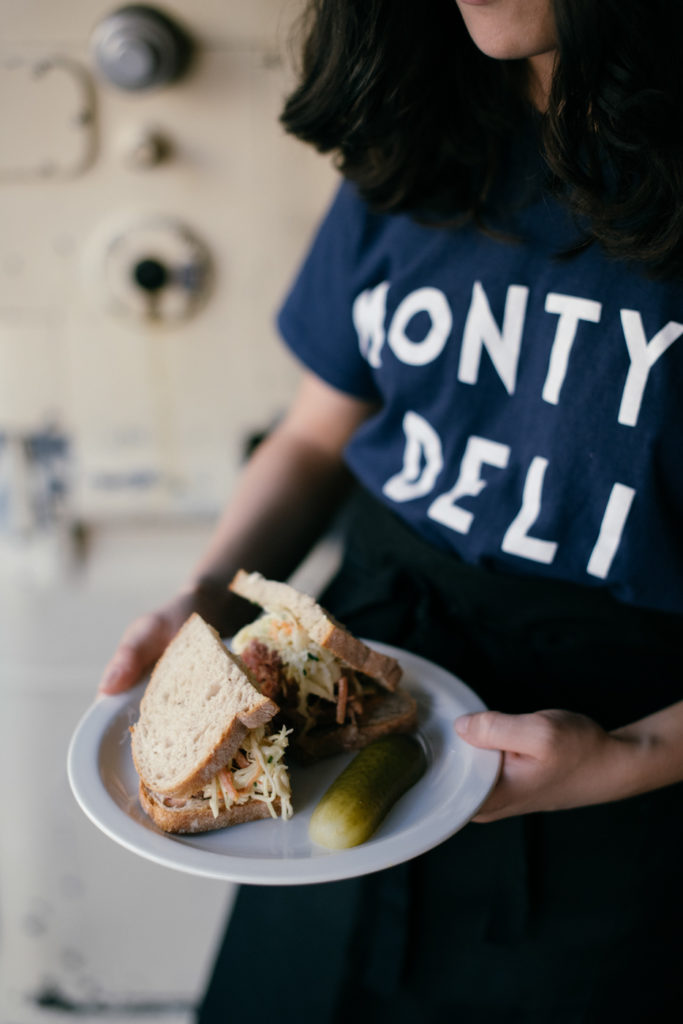
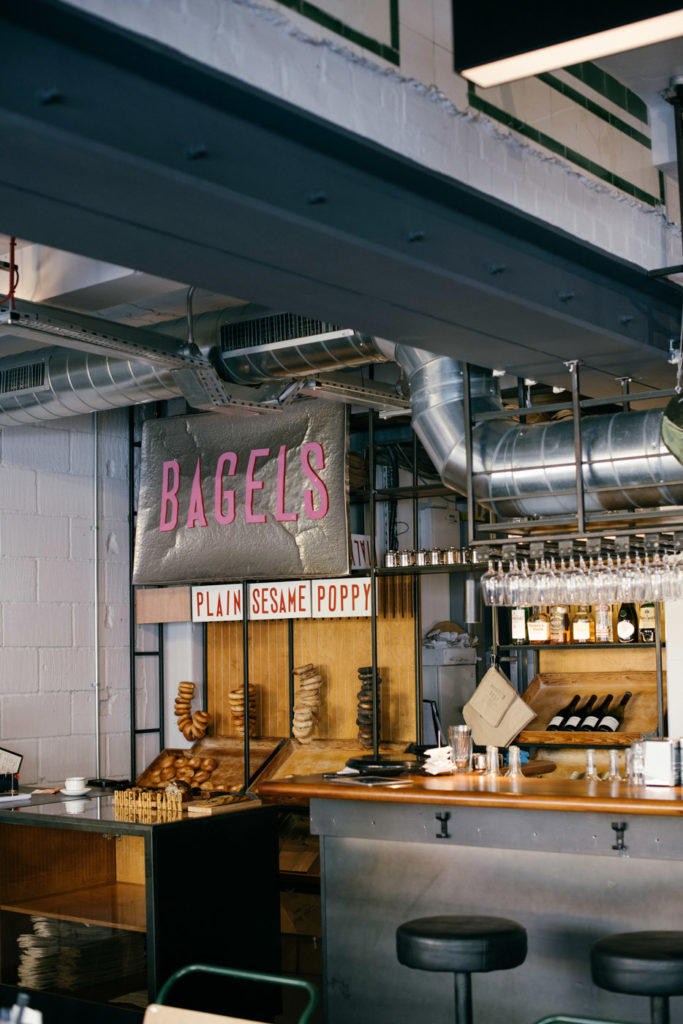


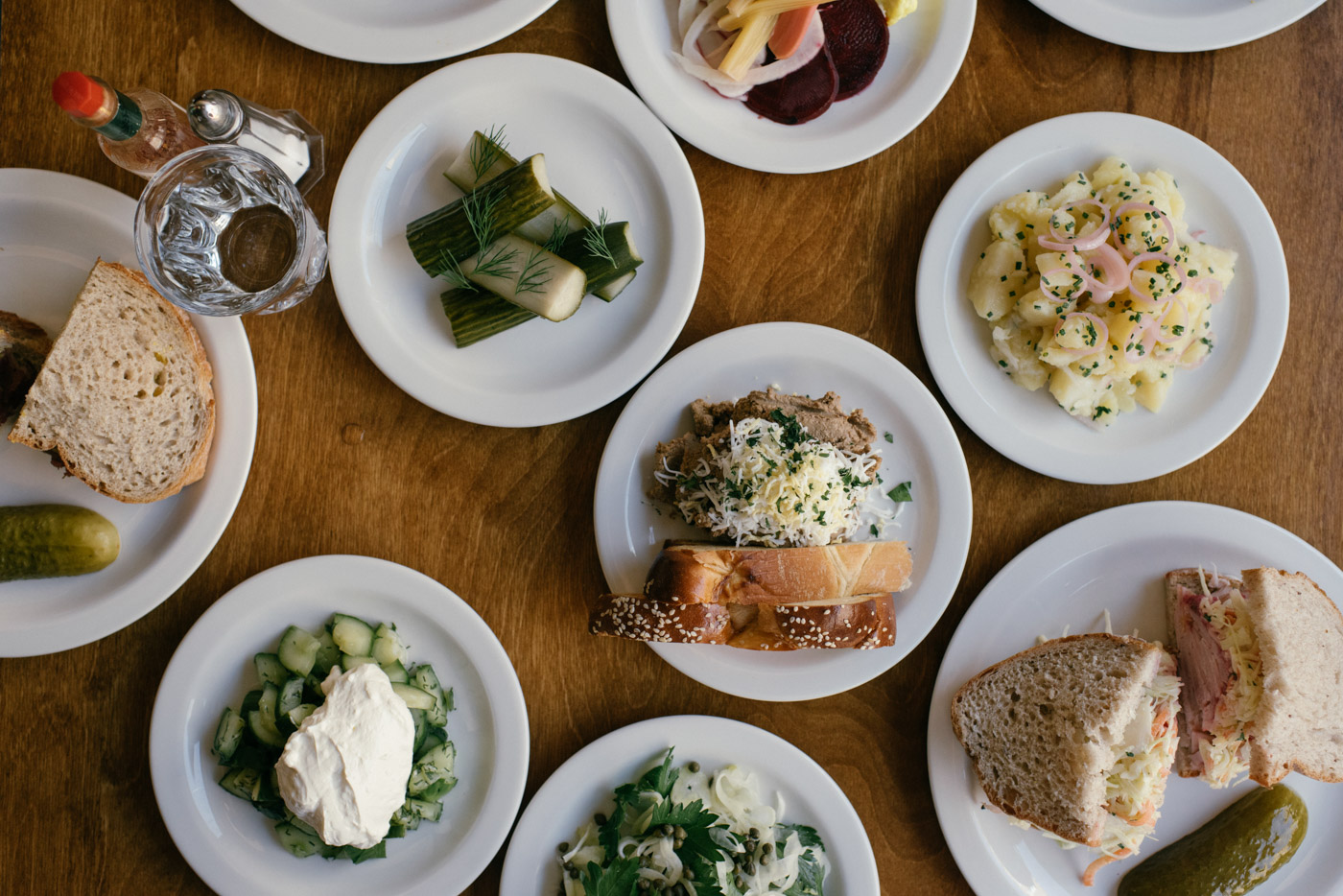
We stay for a late lunch, tucking into plates of chopped liver, turkey sandwiches with pink chrain (a spicy condiment of grated horseradish and beetroot), a rainbow-colored plate of pickled cauliflower, radish, cucumber, beetroot, rhubarb and fennel, bagels, and thick-cut bread heaped with hot salt beef, finished with a pillowy slice of chocolate-laced babka. The experience couldn’t be more distant from a night at Beigel Bake, jostling your way to the front of the queue to bark your order over the drunken din of Brick Lane. Monty’s offers something quite different: fresh, vibrant flavors cooked to order in a room with actual seats. In fact, they are barely comparable. “It’s a wonderful thing, isn’t it, to be really drunk and end up there?” Barratt says of Beigel Bake. “But we don’t really compare ourselves with them. It was never our intention to compete with them. We’re not trying to start any new wave. We just want to feed people and be somewhere people come and feel good.”
“We call this ‘Jewish soul food’ because, in essence, soul food is all about roots,” Ogus says. “Recipes with a history, made by hand by people who really care. It’s restorative, comforting food; it’s not health food. It fills you up. It’s tasty, it’s salty, it’s moreish, it’s fatty. And you feel part of something when you’re eating it.”
What Monty’s promises isn’t ground-breaking or innovative. Instead, it is a celebration of a modest, family-orientated cuisine, one grounded in home life and recipes passed down through the generations. These dishes have been perfected and cherished, and have come to represent the cultural history of a people: the golden bagels with their perfect chew, crispy, steaming latkes, transparent chicken soup, succulent salt beef, and the clink of glasses toasting “l’chaim—to life.”





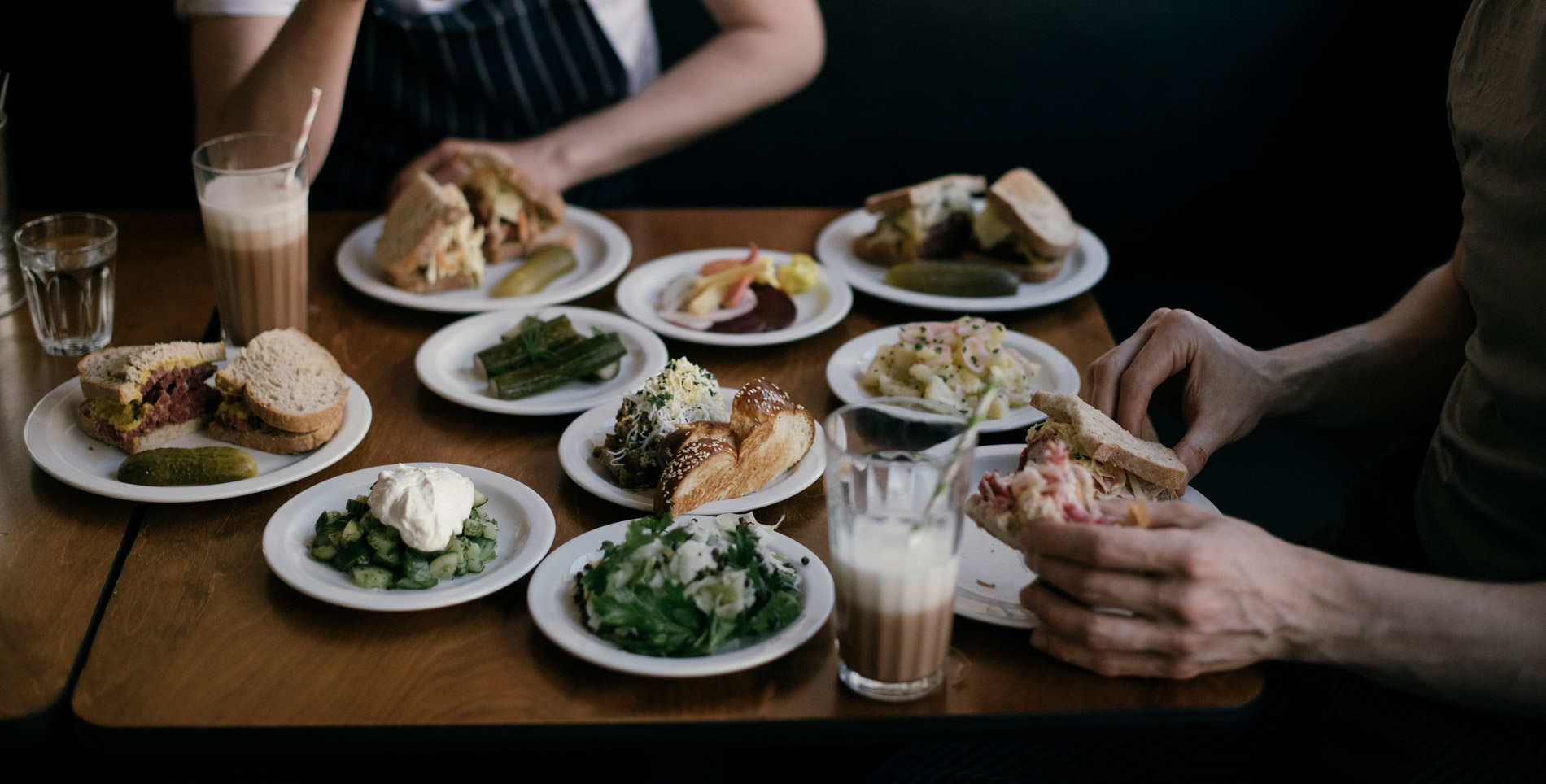

Our comments section is for members only.
Join today to gain exclusive access.